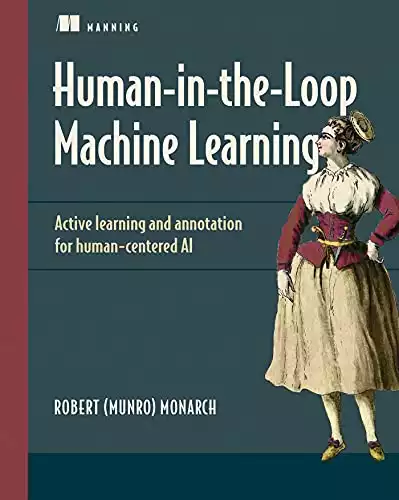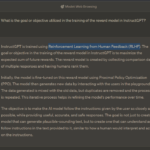Introduction
When we talk about artificial intelligence (AI) and its best-known subfield of machine learning (ML), the focus is usually on machines working independently. Mimicking human behavior such as the learning process and improving without further human feedback dominate this traditional approach.
However, what if we were to combine the strengths of both human intelligence and machine intelligence? That is what the human in the loop (HITL) approach does, attempting to strike a balance between automation and human participation. Here is a closer look at the advantages and disadvantages compared to unsupervised learning.
Also Read: How Can AI Improve Cognitive Engagement
What is Human in the loop (HITL)?
Human-in-the-loop (HITL) is a concept in which humans are involved in the decision-making process of a machine learning models. It is a model of human-computer interaction in which a machine learning algorithm processes data and generates predictions or decisions, which are then presented to a human operator for review and verification. The human operator can correct any errors or make adjustments to the output before it is finalized. This approach is often used in fields such as healthcare, finance, and security, where the decisions made by an algorithm have significant consequences and require human oversight. The goal of HITL is to combine the strengths of both humans and machines to achieve better results than either could independently.
The human in the loop approach is not new in the development of technology. human in the loop (HITL) has been associated with modeling and simulation tasks, as well as with the development of lethal autonomous weapon systems.
In the context of machine learning, human in the loop (HITL) describes an advanced concept in which people become involved in the training, testing, and iterating of different artificial intelligence algorithms. For those who are new to the field, ML has become one of the most talked-about fields of AI. One of its main characteristics is the ability of machine learning algorithms to learn from their results and improve over time without additional human intervention.
Put simply, human in the loop (HITL) takes this ability but adds human judgment back into the process. The goal is to take advantage of uniquely human knowledge and qualities whilst also benefiting from ML’s capacity to process huge volumes of data, for example.
Source: YouTube
Guidelines for the usage of HITL systems.
The human in the loop systems approach is not appropriate in every scenario, but it excels in situations where there is limited data to train a machine learning algorithm. If that applies to your business and you are looking to create an AI-ready company culture, active learning is a must.
Aside from limited data availability, there are specific times in an algorithm’s lifecycle when human involvement can be especially beneficial. These times can be summed up as the three Ts: training, tuning, and testing.
The training process of an algorithm is perhaps the most common time for data scientists to utilize human in the loop (HITL). At this stage, humans provide labeled data for the process of model training. The tuning and testing phases go hand-in-hand. Remember our earlier analogy of a relay race? Testing tasks lead to more tuning, which then leads to more testing, and so on.
During this phase, humans provide fine-tuning input to the model and allow it to reach more confident and more accurate predictions. This is an excellent way to improve low-confidence predictions.
When it comes to deep learning, there are other points of human-machine interaction, for example when algorithms struggle to understand the data they receive or cannot interpret it correctly. Human in the loop (HITL) can make the difference between incorrect decisions and smart decisions.
Types of Data Labeling for HITL
HITL is not restricted to a specific type of data labeling or even basic labeling tasks. Instead, the approach works well with several advanced labeling systems, depending on the nature of the dataset. Some of the most common types of labeling for human in the loop (HITL) include:
- Bounding boxes: bounding boxes work especially well when a computer needs to learn to recognize specific shapes within images.
- Segmentation: boxes will not work if the task requires classifying various parts of an object. In that segmenting the image to divide it into individual parts works better.
- Face markings: as the title suggests, face markings are particularly useful when the task requires facial recognition.
- Sentiment analysis: filtering specific tones from a text requires sentiment analysis. Without ‘understanding’ the tone of a statement or a piece of writing, it is hard for a machine to deliver accurate replies.
Also Read: Artificial Intelligence Labeling: Present and Future
Examples of Human-in-Loop Design
human in the loop (HITL) design is currently being used by some of the most recognizable brands in the world. Any aspect of machine learning involving ambient intelligence could in fact be cited as an example.
Google Street View has vehicles traveling around the world to capture images of real-life buildings and road scenes, which then become human review tasks. Humans help identify exactly what has been captured. More applications are being developed by Google, including an expense processor.
Amazon augmented AI is utilizing a loop approach in its crowdsourcing website Mechanical Turk was specifically developed to allow businesses to source workers for on-demand tasks that computers are still struggling with. As AI and ML develop, there is every chance that the number of tasks will decrease, but right now, humans are essential for these processes.
IBM’s Watson Explorer is another example of how human in the loop (HITL) is used for natural language processing tasks. Users make inquiries in human language and receive their ML responses with a confidence score. If the ML responses do not pass muster or are classed as uncertain predictions, they are flagged for additional training and human interaction.
Automation procedures are becoming more critical to the operations of algorithms in chatbots and in online learning applications, too. Using human annotators for training prevents machine errors in both, and allows for a more active learning approach.
Why Should Your Company Implement HITL
Implementing intelligent systems using human in the loop (HITL) for your company’s AI requirements has several advantages and delivers high-level performance and actionable insights almost immediately.
By integrating human in the loop (HITL), machine learning systems can learn more efficiently. Compared with a traditional approach, loop machine learning requires less training and iteration time to deliver accuracy in predictions and minimize the risk of wrong predictions.
Interactive machine learning in an human in the loop (HITL)-based system also supports the machine’s decision-making process. Through consistent human interaction, consistency and transparency within the system improve. Both sides can protect each other against bias.
Making human operators a part of the machine’s continuous learning process increases the transparency of the entire process. Through their close interactions, data scientists have a better understanding of why the system arrived at a certain actionable decision. As a result, the business benefits from greater accountability and explainability of its AI-derived outcomes.
Challenges of human in the loop (HITL) Systems
Having considered the benefits of human in the loop (HITL)-based systems in detail, it would be wrong to think that these systems are free from inherent challenges.
One of the biggest advantages of AI and ML is to minimize the potential for human error. By reintroducing the human into the system, the potential for mistakes automatically rises. Mislabeling data at the beginning of the process could cause mistakes to be carried through the entire system.
Human decision-making could slow down the entire system. ML algorithms are famous for processing huge amounts of data and delivering results fast. Human decision-making does not reach the same speed. Especially when the human annotation pipeline grows faster than task assignments are being completed, delays are almost inevitable. However, human in the loop (HITL) systems benefit from faster training, including active learning.
Saying that, these powerful systems can be more difficult to build and maintain because of the cost of human labor that needs to be accommodated in addition to the cost of creating the ML system.
Conclusion
Human in the loop (HITL) creates an active learning cycle that combines the benefits of automation with the insights and domain-specific knowledge of industry experts. Real-time human interactions can markedly improve the user experience for anyone working with AI-powered chatbots. Automation software may save time, but it can be prone to machine errors when there is limited data.
Human in the loop (HITL) has the potential of improving a machine learning algorithm for predictions in almost every field. Dividing analytics by task and adding human expertise to machine efficiency will help propel machine learning to the next level.
Also Read: Top 20 Machine Learning Algorithms Explained
References
“AI and Keeping Humans in the Loop.” YouTube, Video, 23 Nov. 2020, https://www.youtube.com/watch?v=ngWxxfepIwI. Accessed 24 Mar. 2023.
Amazon Mechanical Turk. https://www.mturk.com/. Accessed 24 Mar. 2023.
Contributors to Wikimedia projects. “Human-in-the-Loop.” Wikipedia, 21 Mar. 2023, https://en.wikipedia.org/wiki/Human-in-the-loop. Accessed 24 Mar. 2023.
Human-in-the-Loop in Machine Learning: What Is It and How Does It Work? https://levity.ai/blog/human-in-the-loop. Accessed 24 Mar. 2023.
Levity. “What Is Human in the Loop in Machine Learning?” YouTube, Video, 24 Dec. 2021, https://www.youtube.com/watch?v=e6Fk7pzIGBQ. Accessed 24 Mar. 2023.
McFarland, Alex. “What Is Human-in-the-Loop (HITL)?” Unite.AI, 5 Oct. 2022, https://www.unite.ai/what-is-human-in-the-loop-hitl/. Accessed 24 Mar. 2023.
“What Is Human in The Loop (HITL) Machine Learning?” BMC Blogs, https://www.bmc.com/blogs/hitl-human-in-the-loop/. Accessed 24 Mar. 2023.












